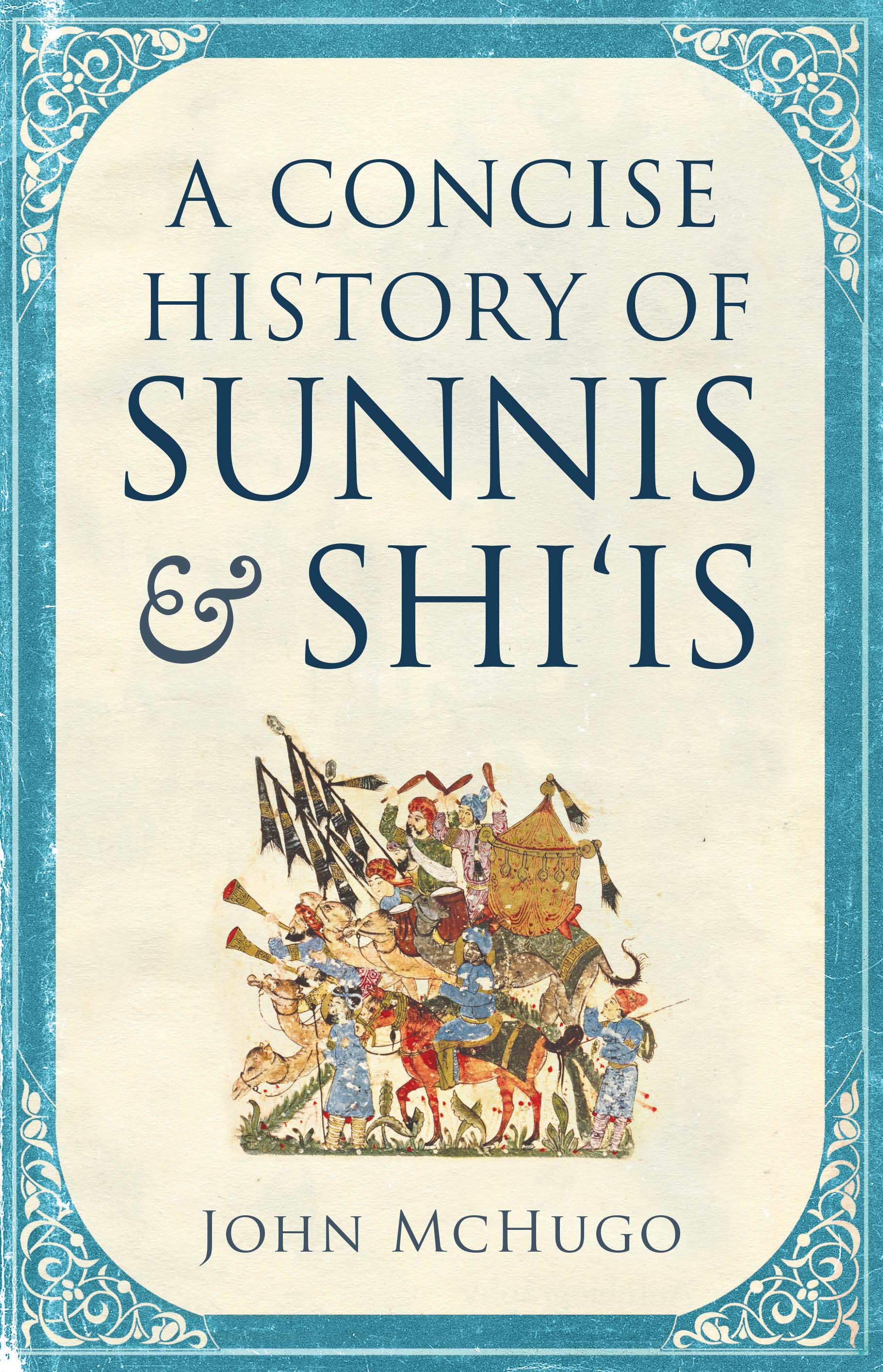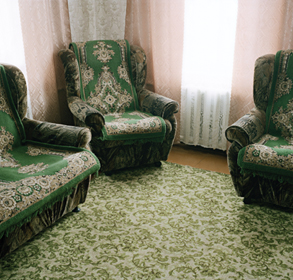
The 1400-year-old schism between the Sunnis and Shia branches of Islam his often blamed for fuelling wars and communal strife in Syria, Iraq, Yemen, Pakistan, Afghanistan and many other countries,as well as a regional cold war between Saudi Arabia and Iran . In his new book, "A Concise History of Sunnis and Shi‘is" (Saqi), John McHugo argues that the sectarian conflicts now seen in many Muslim-majority countries were far from inevitable. Here, McHugo, an international lawyer and historian, with over 40 years’ experience of the Arab world, discusses his central arguments.
Why did you decide to write this book?
I was appalled at the facile way in which the Sunni - Shi'i divide has been latched onto by much of the media (and by people who should know better) as the root cause of instability in the Middle East. I knew this was a gross distortion, and felt it was necessary to tell people why.
How would you define the Sunni-Shi'i divide?
The split goes back to the question of who should have led the Muslim community after the death of the Prophet Muhammad in 632 AD. Who should have guided the believers on the teachings and practice of their faith, now that the Prophet was no longer present? Should Muslims have looked to the companions of the Prophet for this guidance, or should they have turned to his son-in-law and cousin Ali and his descendants who carried the Prophet's blood line?
The Sunni view is that Muslims should look to the Prophet's teachings and example as passed on by his companions, while Shi'is feel that Muslims should follow the interpretation of Islam expounded by Ali and his descendants, the Imams, who of course are also directly descended from the Prophet through his daughter Fatima. This is the essence of the Sunni-Shi'i divide.
Where did it originate, and how significant is the theological history of the split?
Civil wars broke out in the Muslim community in 656 AD, 24 years after the Prophet's death. These wars pitted Ali, the Prophet's cousin and son-in-law, against most of the Prophet's surviving companions. Each side believed the other had betrayed the Prophet's legacy and, therefore, his religion. By now the Muslim community was governing an empire which covered the whole of the Arabian peninsula and stretched from Egypt to the Iranian plateau. Most of the fighting took place in Iraq, where Ali's support was concentrated, and in the Euphrates valley extending up into Syria.
It took some two centuries for the differences between Sunnis and Shi'is to crystallise into separate sects, but scholars from each tradition have frequently borrowed from the other ever since, sometimes acknowledging their sources when they have done so. The differences between Sunnis and Shi'is are not major in terms of doctrine or practice except over the question of authority, and it should be stressed that the two traditions have much, much more in common than divides them.
One group of Shi'is, the Ismaili followers of the Agha Khan, still look to him as an Imam who is a direct descendant of the Prophet Muhammad and Ali. But most Shi'is believe that the twelfth Imam disappeared from view in the 9th/10th centuries but is still mysteriously and secretly present in the world, and will remain so until the End Times. He is often referred to as "the Hidden Imam". Sunni Muslims find the Twelver Shi'i doctrine of the Hidden Imam very strange and alien. Today, in the absence of the Hidden Imam, most Shi'is follow the opinions on questions of the faith and practice of Islam handed down by learned and pious religious scholars, the greatest of whom are described as "sources of emulation".
In practical terms, this is not so different from the Sunnis who also follow their own scholars but without the concept of "source of emulation". However, at the time of the Iranian revolution Ayatollah Khomeini arrogated to himself a much higher status (velayat-e faqih or "the trusteeship of the religious jurist") which effectively gave him control over the new Islamic republic. It should be stressed that this is not only rejected by Sunnis but is extremely controversial among Shi'is. For instance, Ayatollah Sistani, the highest Shi'i religious authority in Iraq, is flatly opposed to it.
In what ways is the Sunni-Shi'i divide often misunderstood in the West?
Try and forget all the analogies that are presented, such as one sect being a bit like Catholics and the other rather like Protestants. Such comparisons only confuse. Words taken from Christian theology such as "sect" and "heresy" should also be used as little as possible, although sometimes it becomes unavoidable. You have to try to look at Sunnism and Shi'ism, as well as at Islam itself, on their own terms and using their own concepts.
It is only in recent decades that non-specialists in the West have become aware of the divide. It used to have much less political significance. Remember that in 1947, predominantly Sunni-Pakistan was founded by a Shi'i, Muhammad Ali Jinnah - and hardly anybody seemed to notice. The divide has become toxic today because it has been manipulated by powerful states interfering in the affairs of other countries and weak leaders have tolerated bigotry and prejudice in order to shore up their own political support.
What has happened in the West is that people have often latched on to simplistic explanations to explain the Middle East and the Islamic world. A narrative that "they have always hated each other" is very appealing to many who would like to distract attention from the West's own mistakes and self-seeking policies. The Sunni-Shi'i divide seems to fit the bill perfectly, but this commonly held Western perception is actually profoundly misguided.
How is the Sunni-Shi'i relationship viewed in Muslim majority countries? Do the same simplifications exist?
The same simplifications do not exist in Muslim communities, but there is often a dangerous ignorance about the other side. This is probably getting worse at the moment in many countries, aided and abetted by the historical narratives taught in schools and propagated in the media. These reflect the ethos that the government would like to inculcate in the population. In many majority Sunni countries, the way in which the early history of Islam and the Arab conquests is taught deliberately excludes the Shi'i narrative, while the reverse would be the case in Iran.
Historically, Sunnis and Shi'is have often lived in harmony side-by-side, although this would frequently have been tempered by disdain for the other. The Ottomans, for instance, just taxed and conscripted Shi'is into their armies like other Muslims (except on those occasions when they posed a political threat). Where there has been communal strife on a sectarian basis, as in Iraq since 2003, divisions have become far worse than at any time in, perhaps, the last thousand years.
What role has the rise of nationalism played in deepening this divide?
On balance, I would say that nationalism has softened, rather than deepened, the divide but the picture is not clear-cut.
Arab nationalists in particular have tried to reach out to minority religious communities as part of the wider Arab nation. In Iraq, for instance, Sunnis and Shi'is came together at the end of the First World War to oppose direct British rule. Saddam Hussein's greatest nightmare was that the grandchildren of those same Sunnis and Shi'is might one day present a common front against him. In the same way, many of Syria's Alawis and other Shi'i minorities became passionate pan-Arabists.
On the other hand, the fact that Iran is the major Twelver Shi'i power while the majority of Arabs are Sunni has led to a certain "othering" of Arab Shi'is by some Sunni Arab nationalists as potential Iranian fifth columnists. Before 2003, the Iraqi Arab nationalist elites running the country had been disproportionately Sunni, and many of them looked down contemptuously on Shi'is - alienating some Shi'is from Arab nationalsim.
What part has reaction against the West and its military interventions played?
The US-led invasion of Iraq in 2003 shattered Iraqi society, which was already under extreme strain. This opened the way to a nightmarish sectarian conflict - a terrible demon that is still with us. This consequence was unintended, although it should have been foreseen. It has had a terrible effect by de-stabilising Iraq and souring relations between Sunnis and Shi'is in many other countries.
But there is another, earlier story that should also be remembered. During the colonial era there were many examples of imperial powers using religious differences to divide and rule. However, it is interesting to see in Arab countries how often Sunnis and Shi'is combined to struggle against imperial occupation - in French mandated Syria, for instance - while in Iraq the British established an Arab monarchy that genuinely tried to unite Iraq (although this proved beyond its capabilities).
Do you see the Sunni-Shi'i divide becoming more or less politically important in the near future?
In the long term I am a cautious optimist. I see sectarian politics as a cul-de-sac and this will become increasingly apparent. In the short to medium term, on the other hand, the difficulty is the Middle Eastern equivalent of pork barrel politics. Governments and political parties use their power of patronage to benefit their supporters. When this leads to favouring one religious (or ethnic) group over another, as it often does, it inevitably means that the rest lose out. This is the curse of democratic politics in today's Iraq, as well as in monarchical systems such as Saudi Arabia.
Yet there are a few straws in the wind that indicate things could go in a more positive direction. Secularist parties still attract large numbers of votes in Iraq, where there are signs that the Shi'i cleric Muqtada al-Sadr is trying to reach out across the sectarian divide. We shall see. Remember also that much pavement politics tends to be cross-sectarian, as when Iraqis demonstrate against corruption and the kind of pork barrel politics to which I have referred. This can also be seen in the "You stink" movement in Lebanon in 2015 (when demonstrators from across the sectarian divides called for efficient garbage collection and an end to corruption) and, perhaps, most of all in Iran's so-called Green Revolution which deterred the Mullahs from rigging the election results in 2009. So I am not without hope.
"A Concise History of Sunnis and Shi’is" by John McHugo (Saqi Books, 2019) is now available in paperback, RRP £10.99

